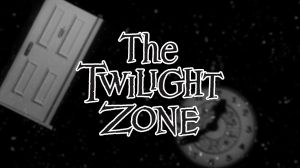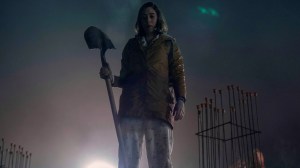
Thor is one of the single most important superheroes in Marvel Comics canon. He was an early creation by the inimitable duo of Jack Kirby and Stan Lee, and has stuck around in one form or another for more than 50 years since his first appearance. Becoming a founding franchise and Avenger in the Marvel Studios line of films only guaranteed that Thor would always be one of the first heroes fans thought of when imagining the Marvel brand. That’s likely why so many readers expected his fall from grace and loss of his role to be a short-lived affair.
Videos by ComicBook.com
When Nick Fury whispered into Thor’s ear in Original Sin #7, he found himself unworthy and dropped Mjolnir to the surface of the moon. Even through multiverse-spanning events, like Secret Wars, Thor found himself unable to lift Mjolnir again, spending four years under the name of Odinson, swinging the axe Jarnbjorn and drinking away his sorrows instead. It was a long wait for fans of this foundational Marvel hero, and one that ended this week with the debut of Thor #1. In spite of initial concerns and Thor’s extended sad state, the long delay between his fall and return has proven to be absolutely worth the wait.

A Long Fall
A major element of the past four years has been the wait for Thor’s return. It’s no secret in superhero comics that when a classic character falls, especially one with a movie franchise, it’s only a matter of time until they return to their former status. What is really important about any superhero death or loss are the questions of how and when.
The mystery about how Thor became unworthy lasted plenty long with answers finally being revealed two years after the inciting event. It wasn’t a matter of a single misdeed, but Thor’s own misgiving about his shortcomings and failures that cost him Mjolnir. Nick Fury simply whispered, “Gorr was right,” a reference to the God Butcher who blamed gods for not intervening to save mortal lives from plights of famine, disease, and natural disasters. While the mystery wasn’t satisfying for all readers, it did underline Thor’s essential goodness. Only his own expectations for what it means to be worthy could create a bar so high that even this founding Avenger and universal hero would fail to meet it.
The when was much longer, and that emphasized the severity of this one moment. When Thor became unworthy, it was not due to a passing notion, but a fundamental shift in his psyche. His belief was consequential and shaped the long road to return through bouts of both self-pity and great deeds. If Thor had picked up Mjolnir only a few months after Original Sin, it would have been a marketing gimmick, but the long wait made it an important element in his legend.

A Worthy Successor
Comic book stores didn’t go without a Thor comic to sell for four years though. Soon after the events of Original Sin #7, a hand reached down to pick up Mjolnir, and a new Thor was born; a mysterious woman now held the mantle. Fans would eventually learn that the new Thor was none other than the original’s longtime friend, partner, and love interest Jane Foster. Even while battling cancer, she knew that the world needed a Thor, and found that she was capable of wielding great power when the inscription changed ever so slightly to read: “Whosoever holds this hammer, if she be worthy, shall possess the power of Thor.”
What came next was one of the most successful and imaginative eras in the long history of Thor comics under the banner of The Mighty Thor. Artist Russell Dauterman teamed with writer Jason Aaron to illuminate new adventures across the galaxy, inventing new threats and recreating classic ones. Looking at the many conflicts that populated the pages of this comic, it is difficult to focus only on a few. The War of the Realms became a dominating thread that continues today as Malekith and a council of heartless rogues raid and pillage various worlds. Yet even as that war raged on, Jane Foster was forced to contend with cosmic forces, like the gods of the Shi’ar and the Mangog.
This new version of Thor was every bit as essential to the rest of Marvel Comics too. She was a regular member of the Avengers throughout her entire period in the role, playing a part in events like Civil War II and Secret Empire, and even striking up a romance with Sam Wilson. Looking back, it is difficult to believe that Jane Foster only wielded Mjolnir for four years. Her adventures and impact, within the comics and on pop culture as a whole, seem far greater in size.

A Spectacular Return
Even in the face of Thor #1, Jane Foster’s accomplishments in the role and her importance in the story won’t be fading. Her recovery is underway, and even Odin, her former adversary, is keeping a careful eye on the woman who proved herself worthy to all of Asgard. Yet the inevitable moment of Thor’s return has arrived, and he has picked up a hammer again — many hammers in fact.
While Thor has resumed his heroic duties with the Avengers and in his own ongoing series, the destruction of Mjolnir has still left him with a long road to proving his worthiness. A single shard of the hammer recovered from the Mangog’s defeat proved difficult to lift, suggesting his confidence has not fully returned. The first issue of the new series features stunning art from both Mike del Mundo and Christian Ward. It also frames the future as a journey to understand what is inherently heroic about this specific, original Thor. His temper and grudges remain, along with an enormous war and plenty of other problems. There is a lot happening, and the first issue dives directly into the deep end of the Asgardian pool. While fans might have missed seeing Thor in this role for years, the adventures and changes that occurred in his absence have set up a mighty return worth that wait.








